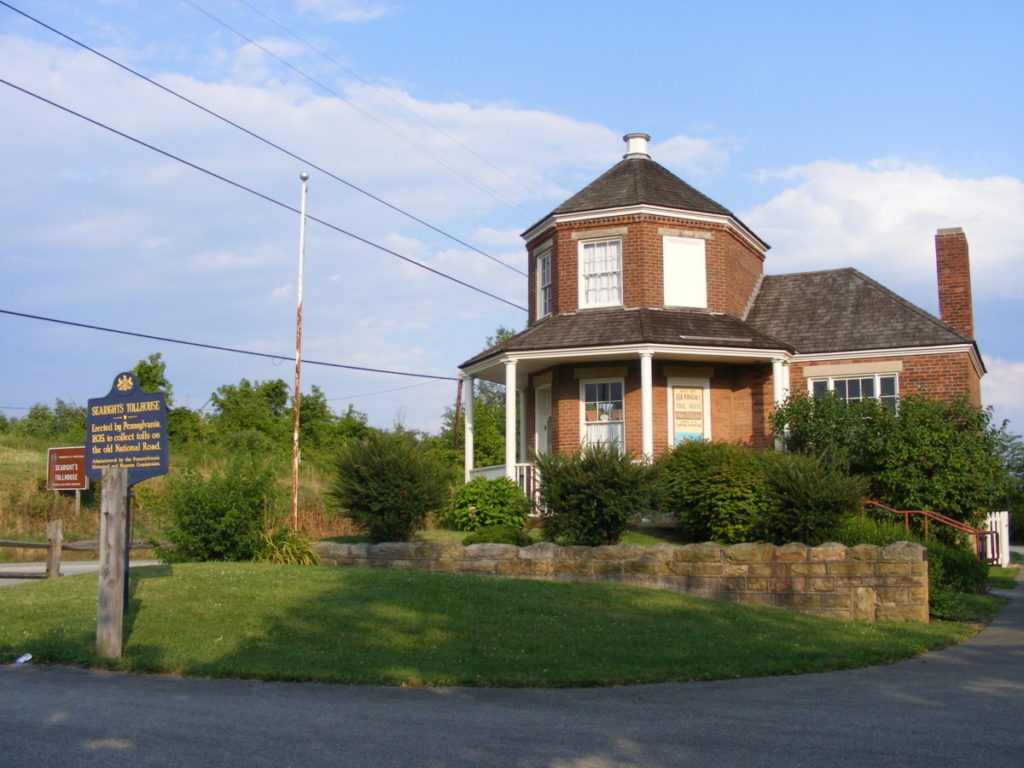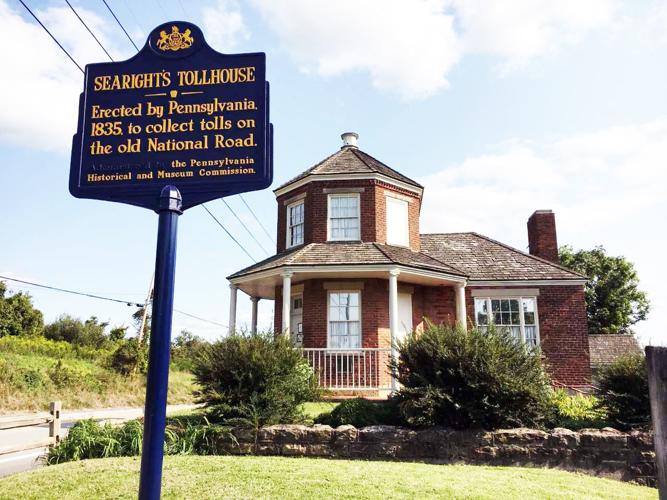In the early 19th century, funding for the National Road’s construction and ongoing maintenance was a significant challenge for governments. To overcome this, the concept of toll roads was introduced. Toll houses were erected at strategic points along these roads, where travelers had to stop and pay a fee in exchange for using the road. These fees varied based on the type of traffic and how much damage they would do to the road’s surface. The collected tolls were then used to finance road maintenance and improvements.

The Searights Tollhouse, like many of its time, was built in a style that reflected its practical purpose. Constructed in 1835, it is a two-story brick structure with a distinctive octagonal tower. The toll collector and his family often lived on the second floor, while the ground floor served as the toll booth and office. A small gated area in front of the toll house allowed for the collection of fees and ensured that travelers paid their dues.
The Searights Tollhouse is a testament to the nation’s commitment to improving transportation infrastructure in the early 19th century. As the years passed and transportation methods evolved many of the toll houses along the National Road were abandoned or demolished. However, the Searights Tollhouse has been preserved as an interpretive site, and was designated a National Historic Landmark in 1964 and placed on the National Register of Historic Places in 1966.
Today, the toll house is part of the National Road Heritage Corridor and is maintained by the Fayette County Historical Society with support from Fayette County Commissioners, GO Laurel Highlands, and other community partners. It has been restored to its 19th-century appearance and is open to the public seasonally and by appointment, offering visitors a unique opportunity to step back in time and learn about the history of toll roads in America.
The Searights Tollhouse is a remarkable piece of American history that stands as a tribute to the ingenuity and determination of the people who built and maintained the early transportation infrastructure of the United States, connecting the nation and facilitating westward expansion. The next time you’re traveling the National Road, don’t miss the chance to visit this charming piece of the past and explore the stories it has to tell.

